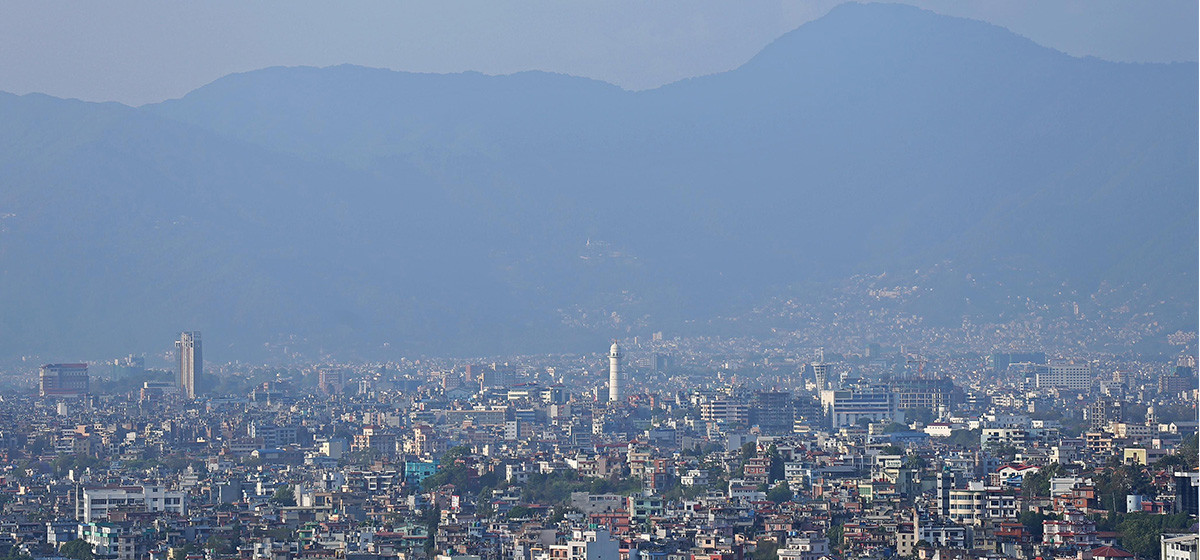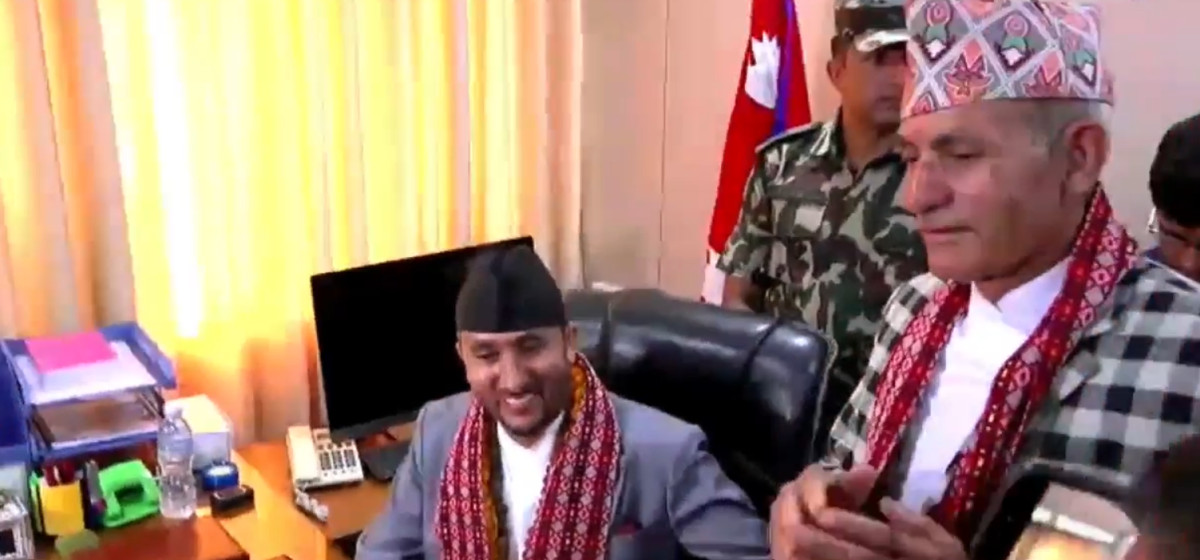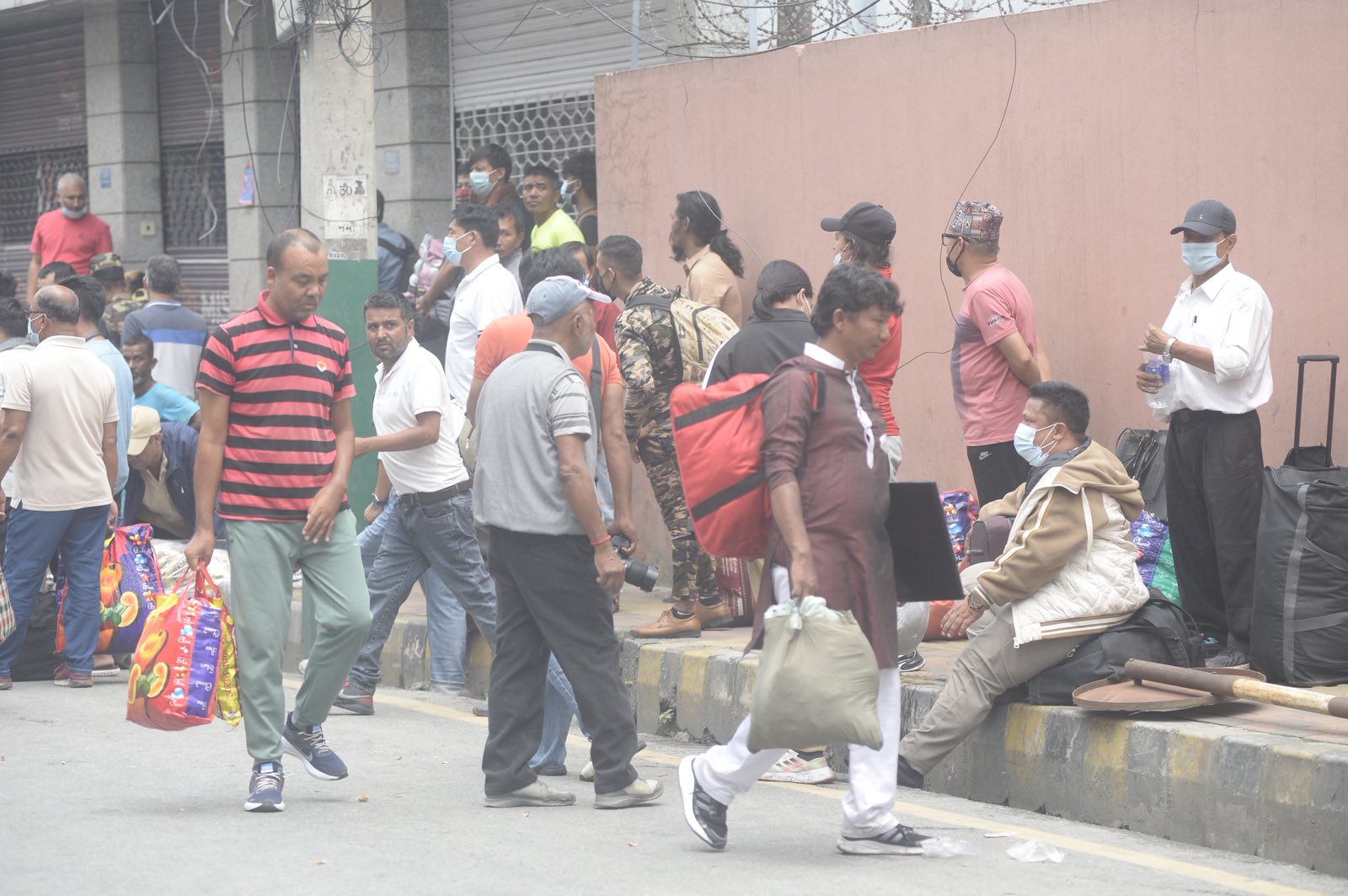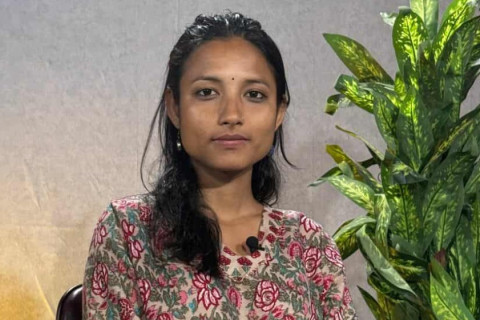KATHMANDU, June 2: Nepal is rapidly progressing towards urbanization. In the last 10 years, the population living in cities has increased at a rate of 10 percent. Experts say that urbanization is happening rapidly without even the minimum necessary infrastructure being ready for the cities. As the population in urban areas increases, economic activities in those areas also grow.
Currently, the population living in Nepal’s cities is 17 percent, and those living in urbanizing areas have reached 40 percent, according to the economic survey of Fiscal Year (FY) 2024/25 published by the Ministry of Finance. In recent years, the trend of transformation from rural areas to cities has increased. This process has also brought changes in the geographic distribution of the population.
For the past few years, Nepalis have been moving from villages to cities, from cities to the capital, and from the capital to abroad. This trend has rapidly increased recently. Experts say this will affect the overall economic indicators of the country.
“If this trend does not stop, in the coming days our country may become one where only senior citizens live, and all the youth may have gone abroad,” said Dr Ramesh Prasad Singh, member of the National Planning Commission (NPC) and former Secretary of the Ministry of Urban Development.
According to a government report, the Terai-Madhesh region, which covers about 170 percent of the land area, has 53.7 percent of the population, while the hilly and mountainous regions have only 46.3 percent of the population. Due to the shrinking rural population and the increasing urban population, the cost per capita for infrastructure development and expansion of services in the hills and mountains is increasing. Experts say it is necessary to increase investment in major infrastructure construction in the Terai-Madhesh region, where population density is higher.
Urban population on the rise

According to Singh, 10 years ago, only 17 percent of the population lived in cities. At that time, there were only 58 municipalities in Nepal. Currently, the number of municipalities has increased to 6 metropolitan cities, 11 sub-metropolitan cities, and 276 municipalities.
Singh stated that as the number of municipalities increased, the population living in these municipalities was used as the basis to calculate the rising urban population. He said, “It is not enough to say that the population living in cities has reached 27 percent; the population living in urbanizing areas has already reached 40 percent.
Experts say that municipalities have been declared based solely on population. When declaring municipalities, factors such as population density and minimum infrastructure should also have been considered. That is why even in urban areas, minimum infrastructure is not visible. For minimum infrastructure in urban areas, at least 5 percent of open space should be available, and in a country like Nepal, which is geographically prone to earthquakes, at least 10 percent open space is necessary.
Similarly, for cities, factors such as roads, schools, playgrounds, hospitals, availability of clean drinking water, greenery, and parks in various places should be taken into account. These minimum facilities are not present in most of Nepal’s cities.
The government has initiated programs for modern, sustainable, and organized urbanization and settlement development. Additionally, in recent times, the Urban Ministry has been running various programs aimed at providing secure housing for marginalized, homeless, and socioeconomically disadvantaged groups. However, these programs have not been very effective. Experts have advised the government to make urban policy focused on managing urbanization in an organized and qualitative manner for balanced development.
Singh said that increasing urbanization should be seen both as an opportunity and a challenge. He stated, “If we can work and build new structures, urbanization is an opportunity for the country, but if structures are not built, urbanization becomes a challenge.”
The Urban Ministry approved the Urban Policy 2081 last Magh (mid-January/mid-February). According to the ministry, the urban policy has been issued with a focus on disaster management, technology, and sustainable development.
Even Kathmandu lacks minimum infrastructure
Even in Nepal’s capital, Kathmandu, the minimum infrastructure required for a city has not been developed.
The area of Kathmandu Valley is 721 square kilometers, but according to government reports, only 372 hectares (3.72 square kilometers) of public open space is available. This means just 0.51 percent of the total area of the valley is open space. Experts say this extremely limited open space increases risks during disasters.
Government reports state that urban areas should have at least 5 percent open space. Experts suggest that in earthquake-prone areas like Kathmandu, at least 10 to 15 percent open space is necessary. The Kathmandu Valley Development Authority (KVDA) is currently studying the open spaces in Kathmandu Valley.
Experts say, “There should be at least one open space within every 15 minutes’ walk. This rule is not being followed. There are no safe places or open spaces to take shelter during disasters.”
An official from the KVDA said, “Kathmandu is an extremely high-risk area from an earthquake perspective. At least 10 percent open space is mandatory here. Open spaces are essential for children to play and for elderly people to walk around. In case of fire or earthquake, citizens need places to escape to, but the open spaces are extremely limited.”



































